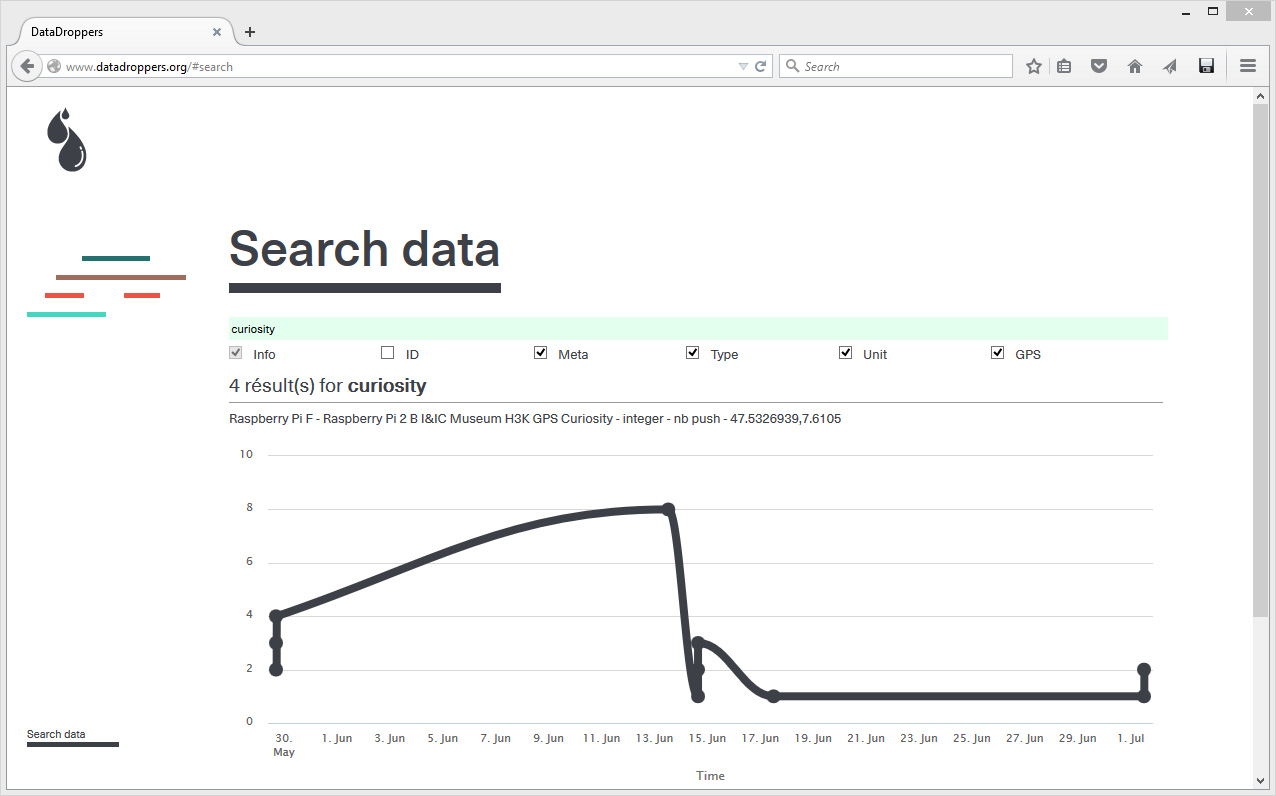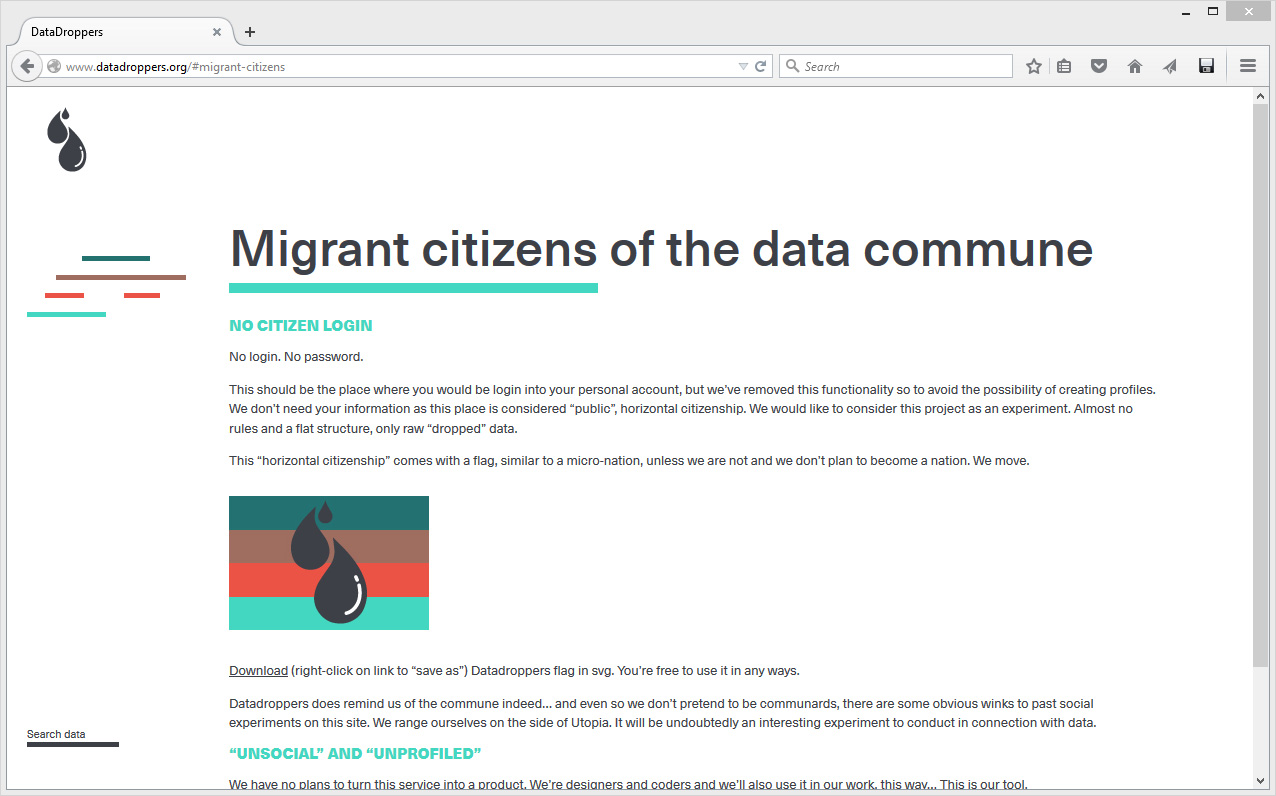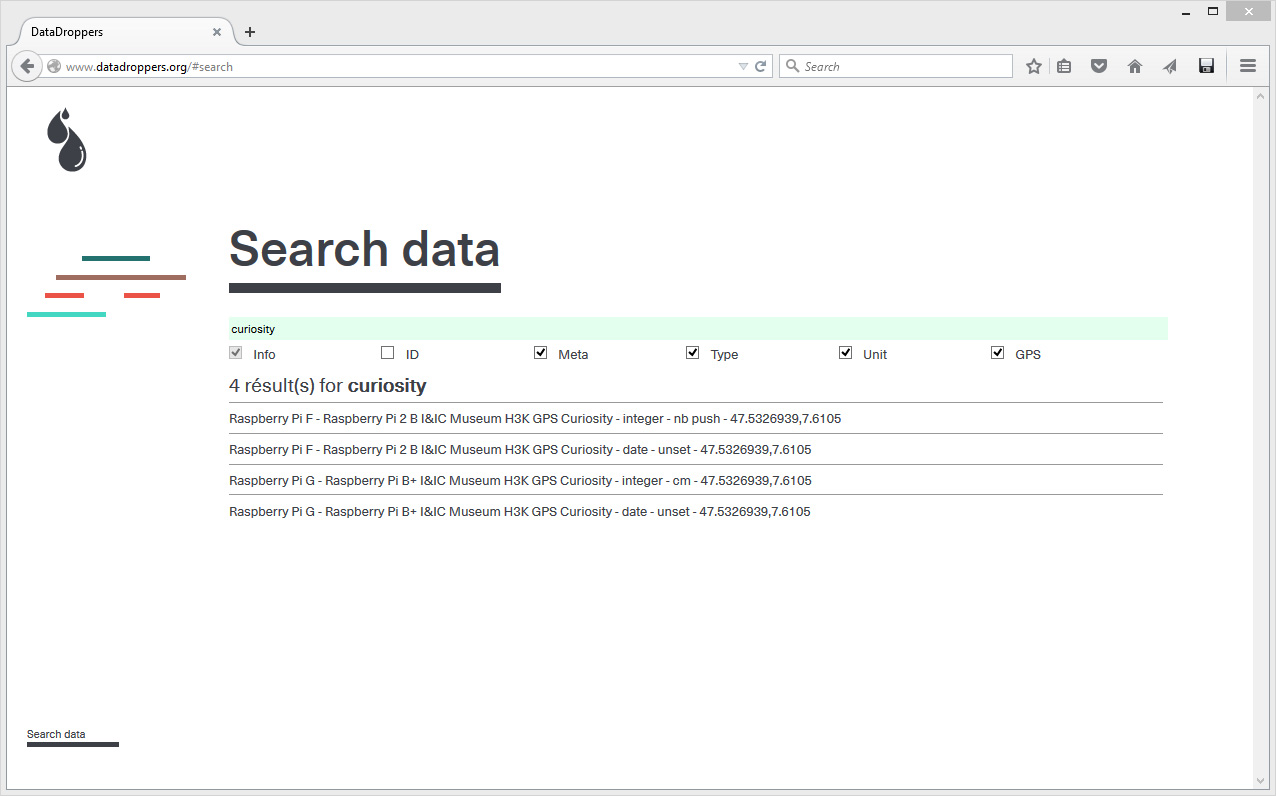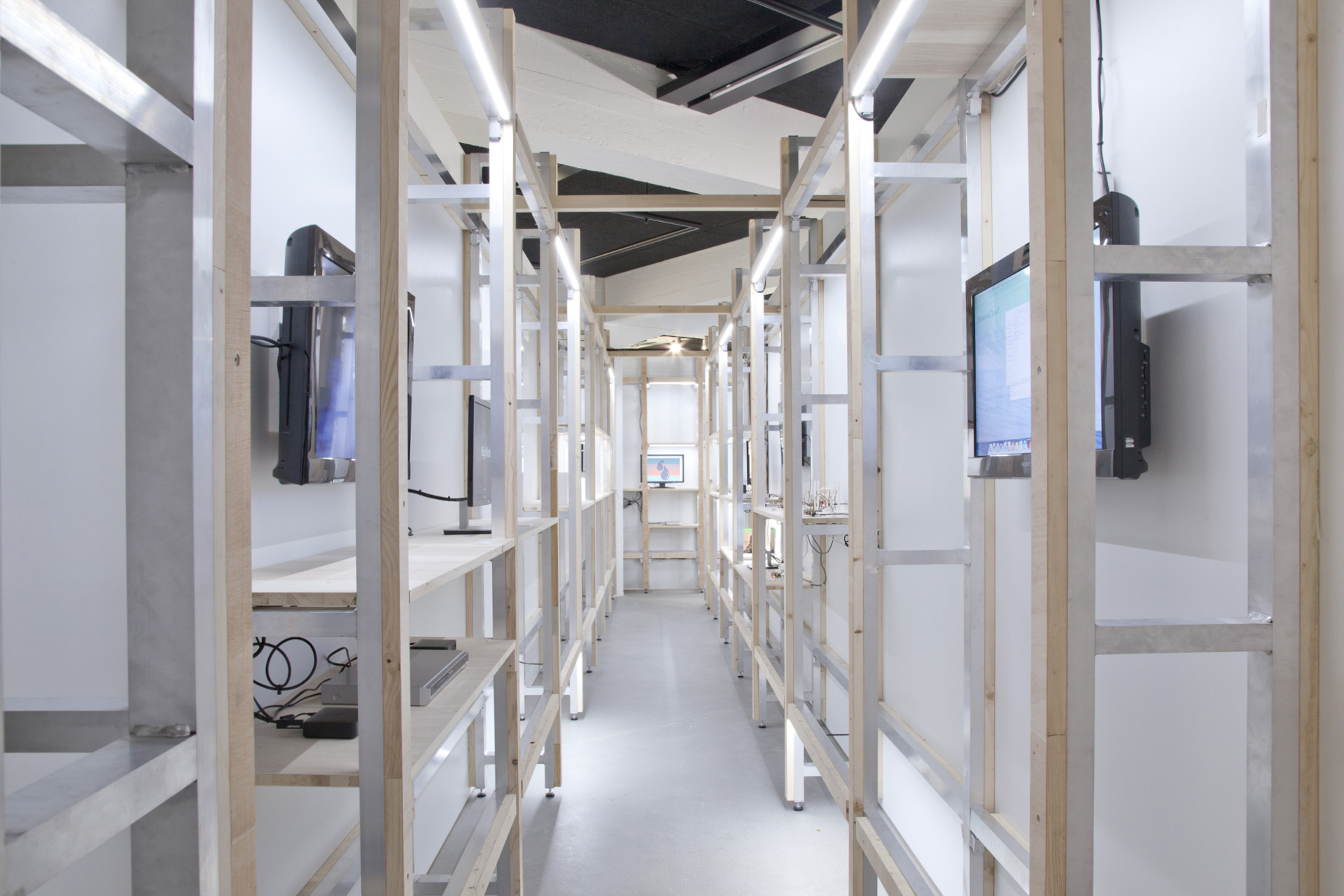Long introductory note: we all know how data have become important and how we're currently in need of open tools to declare and use static or dynamic data ...
There was once a community data service named Pachube, but it has been sold and its community commodified... There has been initiatives by designers like the one of Berg around the idea of electronic tools, cloud and data services (Berg Cloud), but it was funded by venture capitalists and went bankrupt, unfortunately bringing down the design studio as well. There are some good, simple and interesting online services as well, like Dweet.io, but these are companies that will finally need to make money out of your data (either ways by targeted publicity or by later commodification of the community), as this is one of their main product ...



So we were in need of a tool for our own work at fabric | ch that would remain just what it is supposed to be: a tool... As we are using a lot of dynamic and static data - any kind of data - in our own architectural & interaction works, we needed one. Something simple to use, that we could manage ourselves, that would hopefully not cost much to keep running ...
Following what we already did for many previous projects, for which we designed soft technologies and then publicly released them - and yet never tried to sell them in any manner, we should stress it in this case - (Rhizoreality, I-Weather v. 2001, I-Weather v. 2009 and related apps, Deterritorialized Living), we've designed our own data service: Datadroppers - http://www.datadroppers.org -, first for our own needs, and then just released it online as well. Free to use ...
We thought of it as a data commune... trying to keep it as "socially flat" as possible: there are no login, no password, no terms of service, no community, no profiles, no "friends", almost no rules, etc., ... only one statement: "We are the data droppers / Open inputs-outputs performers / We drop off an we pick up / Migrant citizens of the data commune", which also becomes the interface of the service ...
It is a data commune, but not a "community". It is from a "market product" point of view "unsocial", almost uninteresting to later commodify. Yet there is still one single rule (so to keep the service simple and costless to handle): once you publish your data on the site, they'll become public (for everybody, including third party services that won't necessary follow the same open rules) and you won't be able to erase them, as they'll be part of the commune and will possibly be used by other "data communards" as well. They'll be online as long as the service will (i.e. I-Weather is online for 14 years now). So just declare on Datadroppers raw data that you consider for yourself public ...
The service, directly developed on the basis of previous projects we did, was first published and used last June, for an exhibition at the Haus der elektronische Künste in Basel (Switzerland). It is hosted in Switzerland / Lausanne under strict laws when it comes to data. There are very few data on the site at this time, only the ones we published from the exhibition (as a test, you can for exemple try a data search using "Raspberry Pi" as a string in the Search data section, which will bring live sensors data as a result). We will now certainly continue to use the service for future works at fabric | ch, maybe will it be also usefull for you? ...
The tool is fully functional at this time, but not entirely completed yet. We expect to release Javascript and Processing libraries later on, so to ease the use of the service when developing applications ...
By fabric | ch via datadroppers.org
-----





The "communal service" is in fact a statement, the statement becomes the navigation interface. The two main sections of the website are composed by the parts in which you can play with or search for data.
We drop off and we pick up is the area where one can see what can be achieved with data. Obviously, it is either possible to declare (drop off) data and tag them, or retrieve them (pick up) - image above -. You can also Search data following different criteria -below-.




Usual data will certainly be live feeds from sensors, like the one in the top image (i.e. value: lumen). But you could certainly go for more interesting things, either when you'll create data or when you'll use them. The two images above are about "curiosity" data. They were captured within an exhibition (see below) and are already partially interpreted data (i.e. you can leave a connected button with no explanation in the exhibition space, if people press it, well... they are curious). As another exemple, we also recorded data about "transgression" in the same exhibition: a small digital screen says "don't touch" and blinks in red, while an attached sensor obviously connected to the screen can indeed be touched. Childish transgression and slightly meaningless I must admit... It was just a test.
But you could also declare other type of data, any type, while using complementary tools. You could for exemple declare each new image or file within an open cloud service and start cascading things. Or you could start thinking about data as "built" artifacts... like we did in a recent project (see below, Deterritorialized Living) that is delivered in the form of data. Or you could also and of course drop off static data that you would like to store and make accessible for a larger community.
Possibilities seems in fact to be quite large.

Datadroppers as a commune could even be considered as a micro-society or nation. It comes with a dowloadable "flag", if you desire to manifest your attachment to its philosophy or plant it in your datacenter!



.jpg)
Some views of Datadroppers in first use during Poetics and Politics of Data exhibition at the Haus der elektronische Künste in Basel (Switzerland), as part of the scenography designed by fabric | ch. Many Raspberry Pis were installed inside the space that captured exhibition's data and feed the service. They can now be retrieved from http://www.datadroppers.org/index.html#search as the exhibition will end this week-end > search with string "H3K" or "Museum".
.jpg)
.jpg)


Finally, I must mention the project that initiated Datadroppers, both because we developed the rules of the data sharing service during this latter project (Link > follow "Access to open data feeds"), but also because it is probably one of the most interesting use of Datadroppers so far...
Deterritorialized Living is an artificial, yet livable troposphere that is delivered in the form of data. Just like if we indeed install atmospheric sensors in a real environment, unless the environment doesn't exist in this case (yet), it is the project. The process is therefore reversed within this almost geo-engineered climate that follows different rules than our earth/cosmos driven everyday atmosphere. We have the open data feed to later set it up. fabric | ch or another designer as the feed is open. We plan to use this feed and materialized it through different installations, like we already started to do.
So, for now, this fictive data flow of a designed atmosphere is also delivered as a feed (again: Search data > Deterritorialized), among other ones (some "real", some not), within the webservice offered by Datadroppers .













.jpg)
.jpg)
.jpg)


